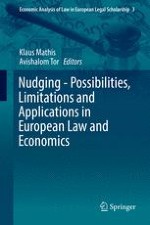2016 | OriginalPaper | Buchkapitel
15. Nudging in Tax Law?
Eyetracking Research on Limits of Efficacy of Legal Definitions
verfasst von : Mariusz J. Golecki, Marcin Romanowicz, Jerzy W. Wojciechowski
Erschienen in: Nudging - Possibilities, Limitations and Applications in European Law and Economics
Aktivieren Sie unsere intelligente Suche, um passende Fachinhalte oder Patente zu finden.
Wählen Sie Textabschnitte aus um mit Künstlicher Intelligenz passenden Patente zu finden. powered by
Markieren Sie Textabschnitte, um KI-gestützt weitere passende Inhalte zu finden. powered by
